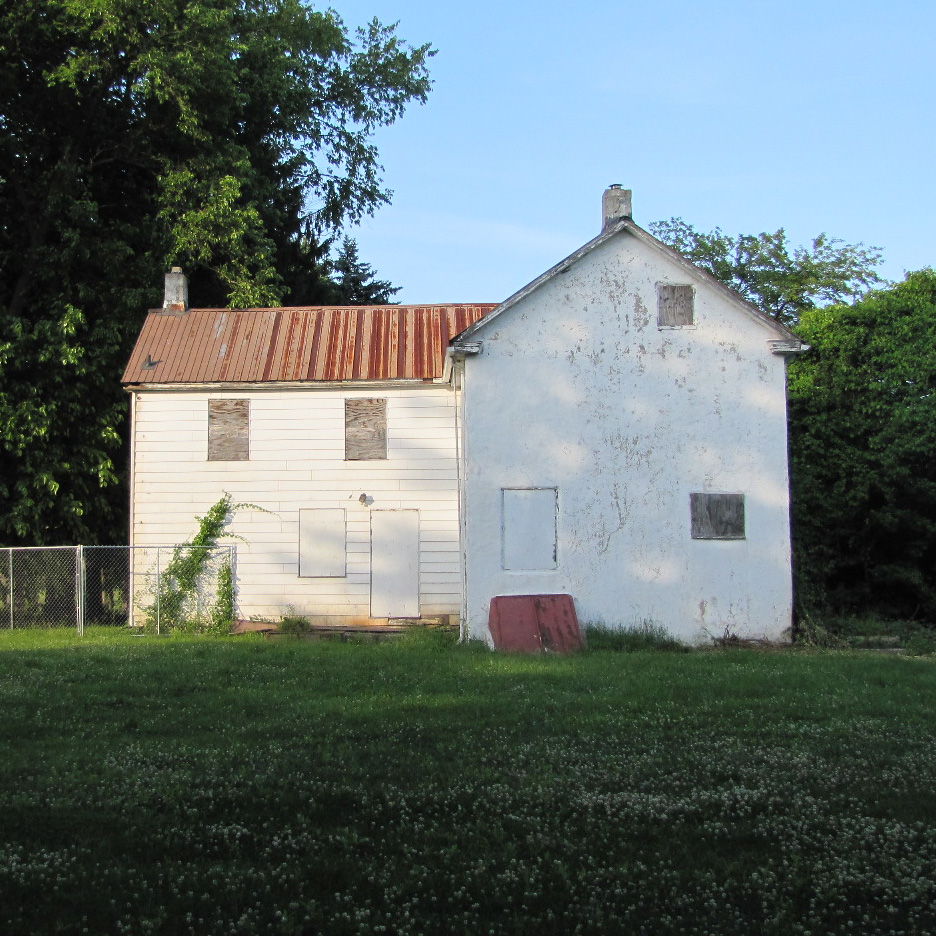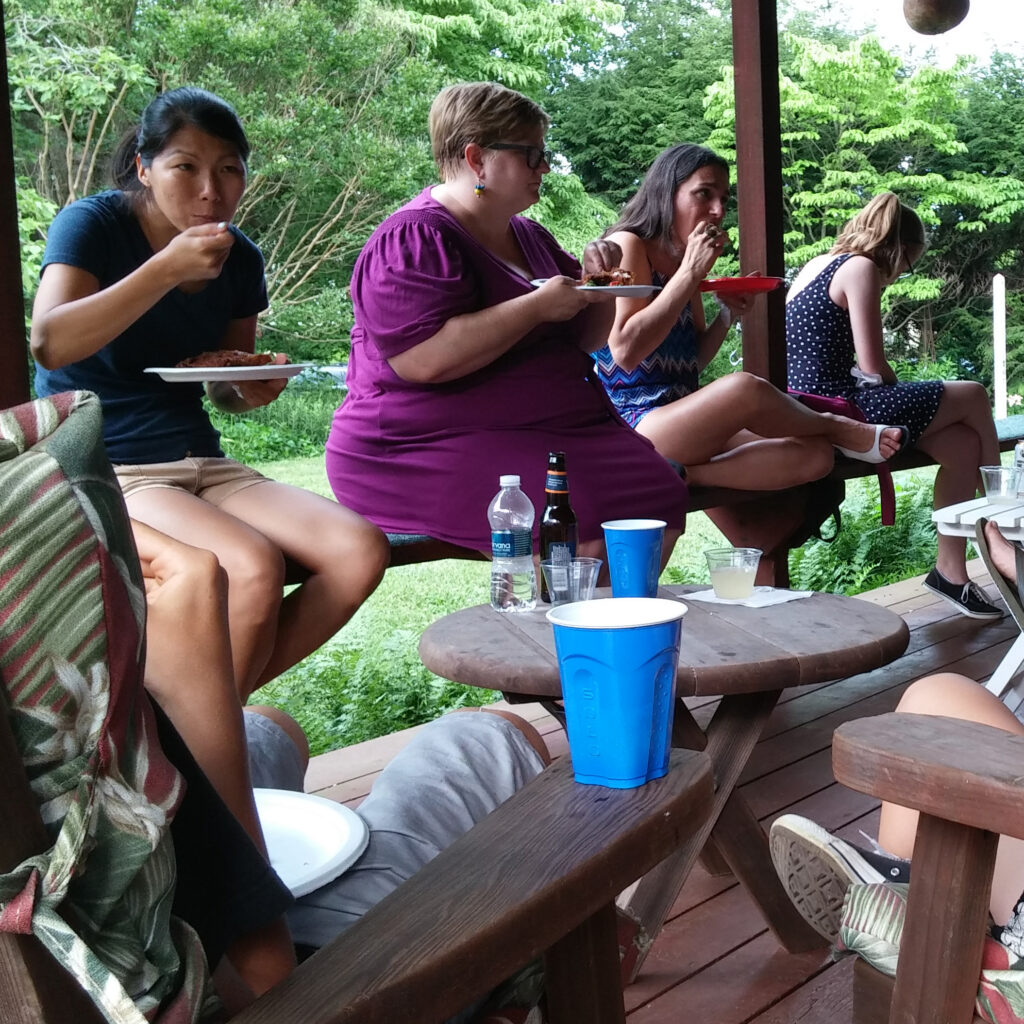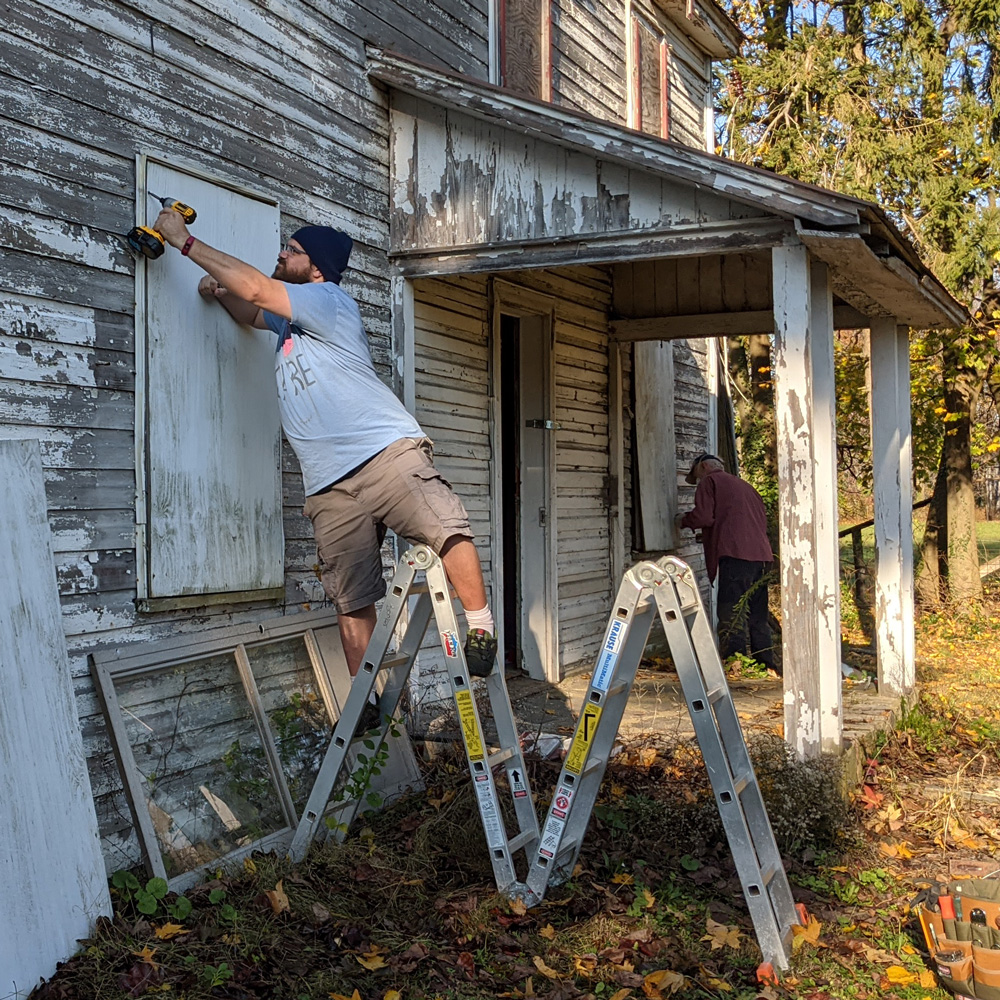I founded the nonprofit arts venue, Jester Artspace, Inc. in 2015 to save a pre-Civil War farmhouse for the arts and community benefit. To date, we have raised nearly $1 million for the house. Here’s how:
The Problem
The Brandywine Hundred area of northern Delaware, where I was born and raised, had a seemingly unsolvable historic preservation problem. The suburban area is dotted with these old 18th and 19th century farmsteads that are historically significant, but expensive to renovate, and are too small to be commercially useful. Many fell into the hands of New Castle County in the 20th century as their farms became public parks. As a result, they have faced demolition by neglect, slowly decaying with no one to care for them. One of these structures in particular was a pain point in my community—the Jester Farmhouse on Grubb Road. So the problem was clear: how might we restore the Jester Farmhouse, find a new purpose for it, and ensure its future care? The metrics for success were straightforward: a restored house, and a financially sound inhabitant.
There was some history to this effort. Previously the county had established a resident curatorship program so that someone from the community could invest their own money into the restoration and in exchange, they could live there for free until the end of their days. However, due to cost and other financial logistics, the county had no takers. But they did learn that the community still wanted the house saved and the land preserved.
The Strategy
In 2015 I launched this effort by holding a friend-raising potluck dinner and invited all of my local friends and anyone else from the community who wanted to come. We had a spirited brainstorm over drinks and fried chicken and agreed on the idea of forming a non-profit organization to fill the curatorship role, which would allow us to raise public funds and make it a community effort, overcoming the burden on any one particular individual. We chose an arts group because that was an area of interest and expertise that our group understood and valued.
I crafted the initial idea and presented it to county officials, who frankly seemed very eager to get this problem off their hands. We got their approval to build out our proposal further for the County Executive.
With that came our next big question. Was this at all realistic? Would this renovation financially work? We turned to publicly available tax records for the comparable arts organizations and foundations in Delaware. We looked at where the arts groups got their money, who the funders gave to, and how much. At the same time, we recruited our pro-bono architect and obtained a rough estimate of our restoration costs. And then we took our results to local professional fundraisers to ask for their opinions. The answer was yes. This was a realistic fundraising goal.
Building it
None of us had the faintest idea how to found a nonprofit. So we picked the legal assistance and knowledge base that was within our budget—the public library. With that we learned how to incorporate, pass bylaws, build out our board, and obtain nonprofit status with the IRS, making us eligible for grants. I was voted in as the president of Jester Artspace, Inc. With some pro-bono legal help, we negotiated and signed a long-term $0 lease with the county by the end of 2016. They agreed to fix the outside of the building, and we would take care of the inside.
Communication and Fundraising
With so much accomplished, we had a really great story to tell and it was time to strategize how to do it. I led our programming committee in a Luma exercise, the importance-difficulty matrix, where we discovered that our best communications channels would be free and paid social media, shared to large local social media groups, along with a presence at in-person events such as local arts festivals.

As for where to focus our fundraising efforts, we turned to the report Philanthropy in the First State by KBT and Associates showing the bulk of donations likely to come from private donors, followed by large foundations. This required strong storytelling in a traditional annual report in addition to our website. We scored 3 major grants totaling $103,000.
Outcome
Our biggest win was the support of the County. They have signed construction contracts for $850,000 for the site and building envelope. We have raised $126,000 for the interior work, which should take us far enough to get our Certificate of Occupancy and allow us to begin operating from the farmhouse. The County has also committed over $1 million to the rest of the surrounding park. And in order to achieve those financial goals, we had to demonstrate success in our organizational goal of creating a viable nonprofit to inhabit the house. Construction began on November 16, 2020. The final proof of success will come when we open our doors to the public, but we are well on our way.






